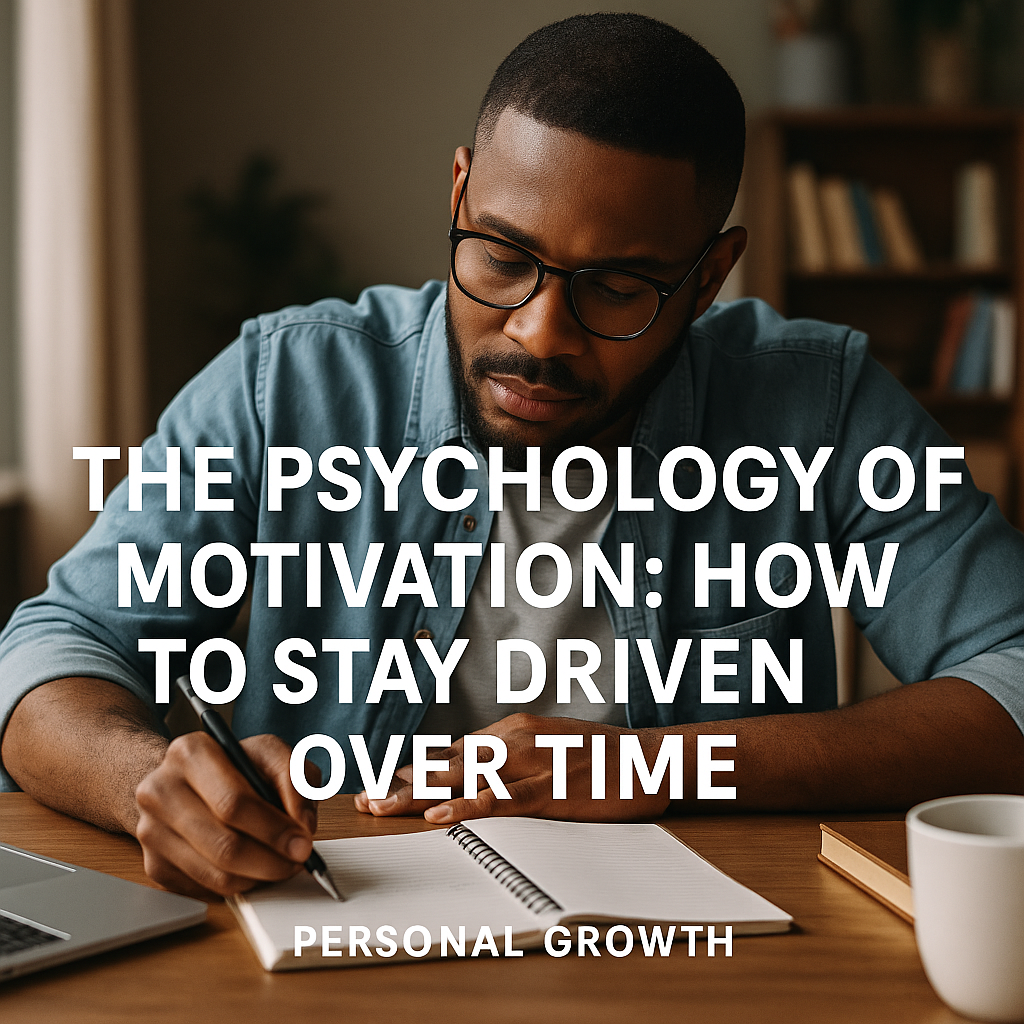Motivation often feels like a mystery. Some days, you’re fired up and focused. Other days, even simple tasks feel like climbing a mountain. The key to long-term success isn’t chasing motivation—it’s understanding how it works and using it strategically.
In this article, we’ll break down the science of motivation and give you actionable tools to stay driven, even when inspiration fades.
What Is Motivation?
Motivation is the force that drives you to act. Psychologists divide it into two main types:
- Intrinsic Motivation: Doing something because you enjoy it or find it meaningful
(e.g., learning a skill for personal growth) - Extrinsic Motivation: Doing something for an external reward or consequence
(e.g., working for a paycheck or a deadline)
Both types matter. But intrinsic motivation tends to last longer and feel more fulfilling.
1. Know Your “Why”
Motivation starts with clarity. When your goals are connected to personal values or deeper reasons, they become more energizing.
Ask yourself:
- Why is this goal important to me?
- What will achieving it allow me to experience or become?
- What am I willing to go through to make it happen?
A strong why fuels you through hard days.
2. Break Big Goals Into Small Wins
Large goals are exciting—but also intimidating. Break them down into bite-sized milestones.
Instead of:
❌ “Write a book”
Try:
✅ “Write 300 words today”
This makes progress feel doable and gives your brain regular dopamine hits from achievement.
3. Make Progress Visible
The brain loves signs of movement. Visual cues remind you that you’re making progress—even when it’s slow.
Use:
- A habit tracker
- A progress bar or checklist
- A journal of daily wins
- A wall calendar with “X”s for each day you show up
Visible progress creates emotional momentum.
4. Use “Temptation Bundling”
Combine something you need to do with something you want to do.
Examples:
- Only listen to your favorite podcast while exercising
- Watch YouTube only after completing 30 minutes of work
- Light a candle and play calming music when writing or studying
This links effort to immediate pleasure, which increases follow-through.
5. Harness the Power of Identity
Instead of asking, “What do I want to achieve?” ask:
“Who do I want to become?”
Then act like that person today.
Examples:
- “I’m a focused person” → Put your phone in another room
- “I’m a healthy person” → Choose a nourishing meal
- “I’m a learner” → Read one page
Identity-driven motivation lasts longer than willpower.
6. Expect Resistance—and Plan for It
Motivation naturally dips. That doesn’t mean you’re failing.
Plan for low-energy days by:
- Creating “minimum versions” of your habits
(e.g., 1 push-up, 1 sentence, 1 mindful breath) - Using external accountability (friends, apps, check-ins)
- Revisiting your why when you feel stuck
Anticipating slumps makes you more resilient to them.
7. Celebrate Effort, Not Just Results
Waiting for big wins can kill motivation. Celebrate showing up.
Say:
- “I’m proud I did something today.”
- “That wasn’t perfect—but I’m consistent.”
- “Each small step matters.”
Reward effort, and results will follow.
Final Thought: Don’t Rely on Motivation—Build a System
Motivation is like the wind. It’s great when it’s there, but you can’t control it. What you can control is your structure:
- Clear goals
- Daily habits
- Visual tracking
- Self-awareness
- A strong sense of purpose
That’s how you stay driven—rain or shine.

